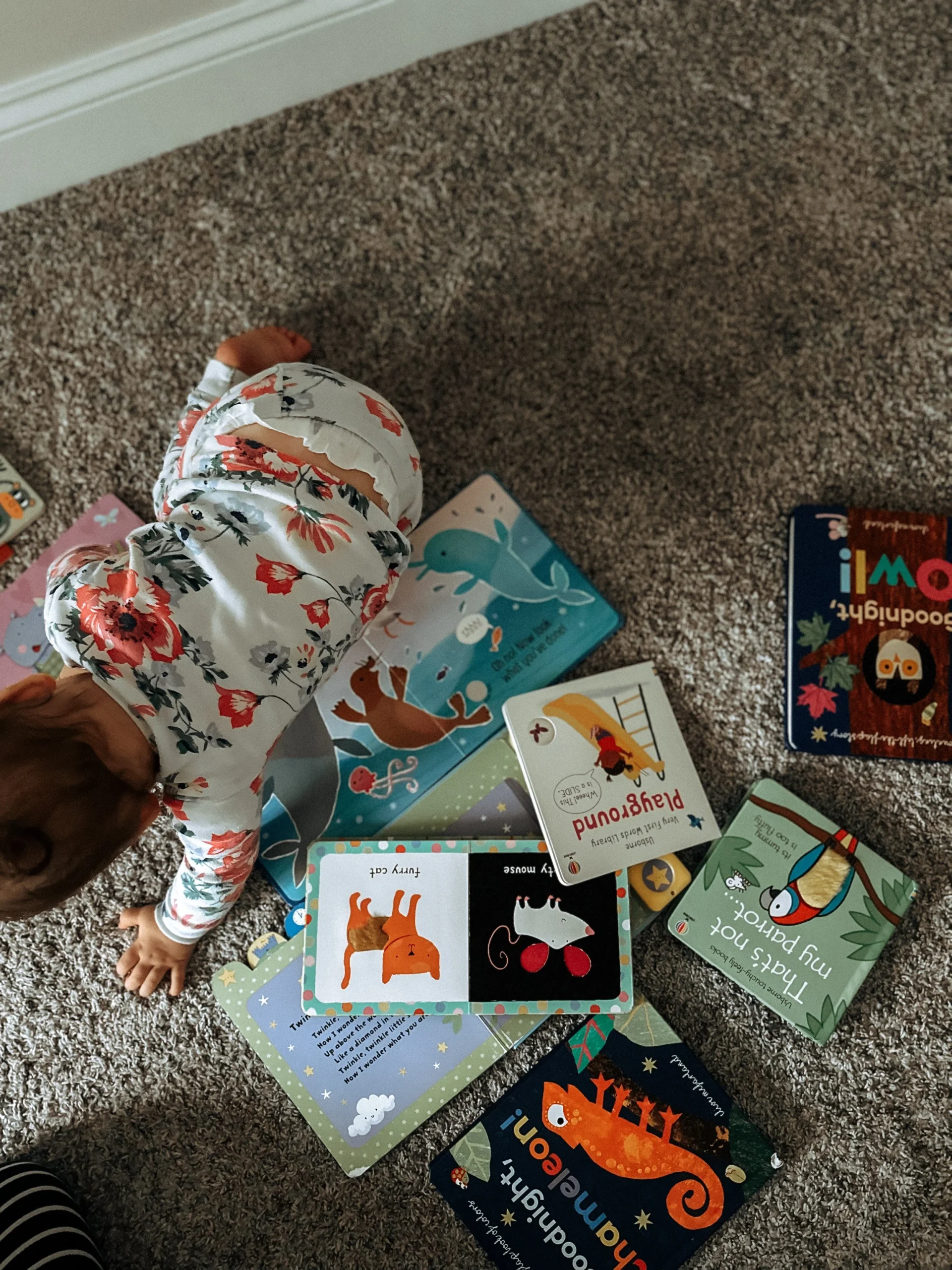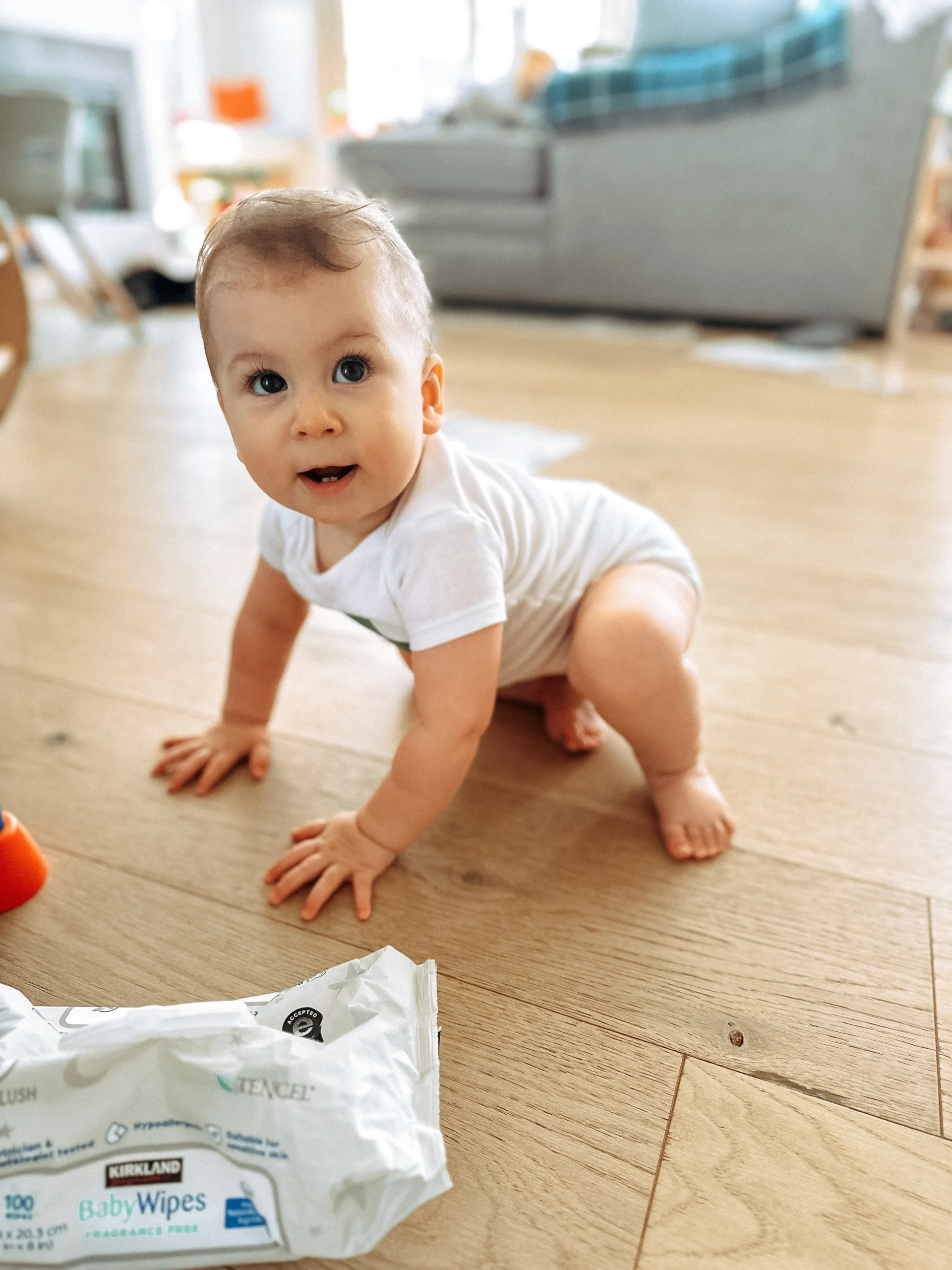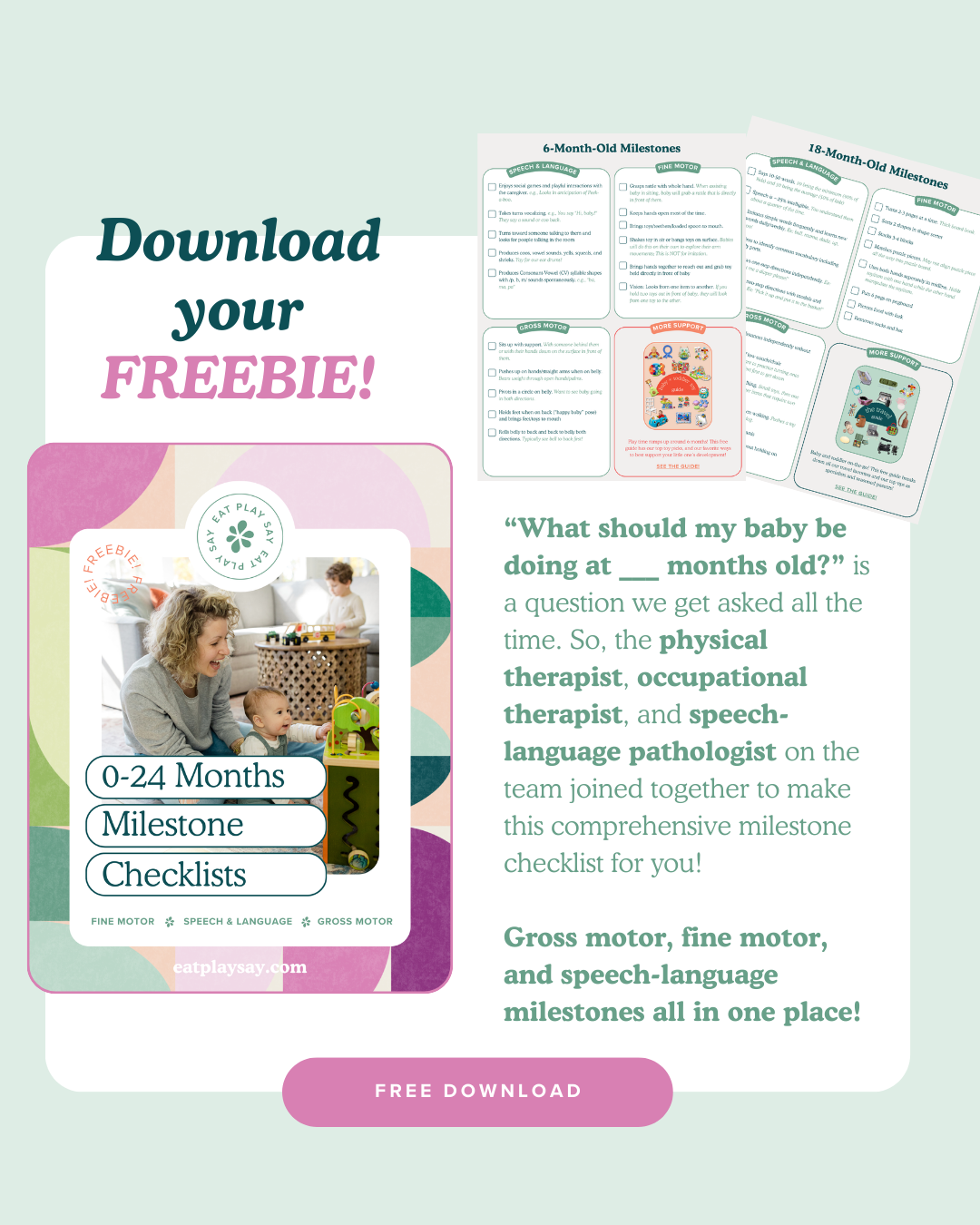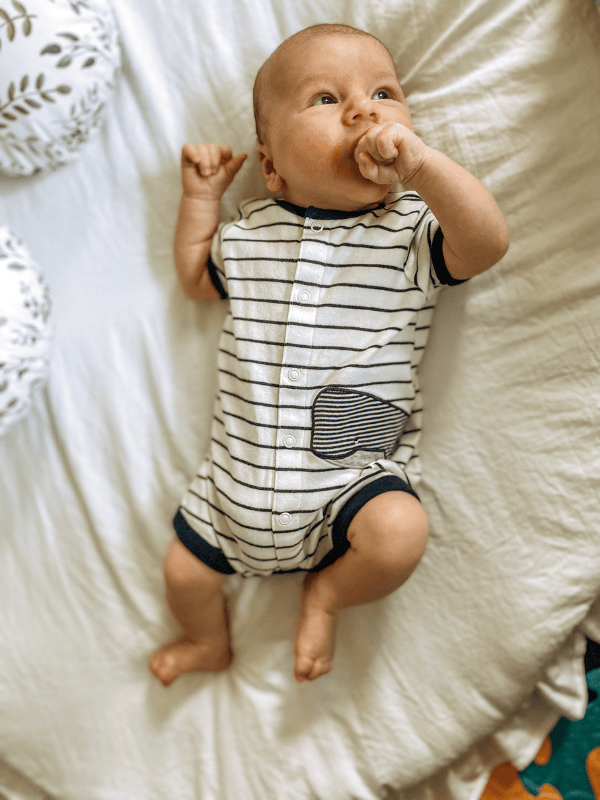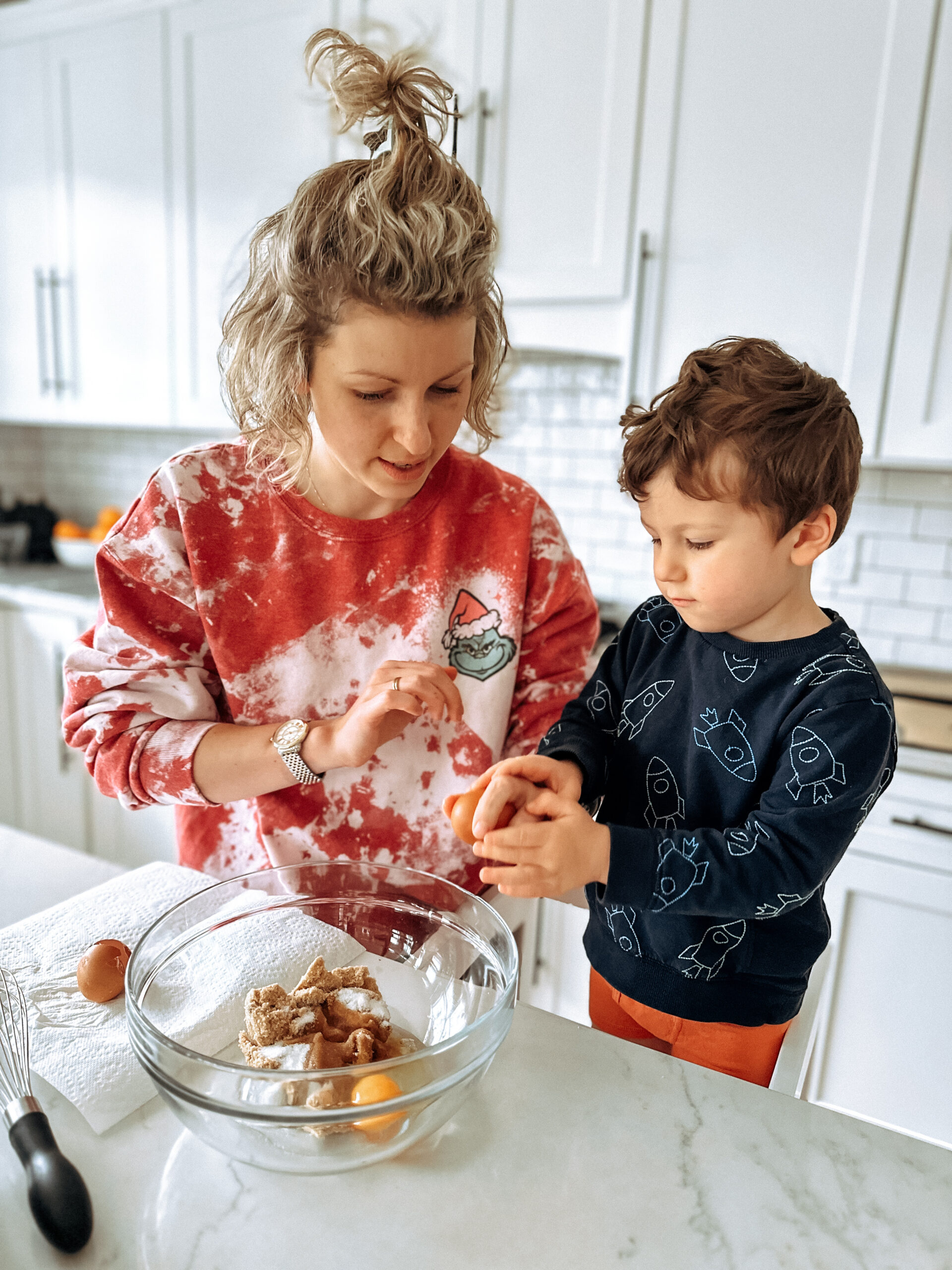This page contains affiliate links. We will receive a commission on qualifying purchases using these links.
TLDR; Yes. Yes it is.
I brought the physical therapist on the EPS team in for this one because there is a lot to unpack about crawling!
Crawling is the first big milestone that really opens up the world of exploring for your little one. Once your baby can crawl, they can get around more quickly and see the world from a whole different point of view. And while it means that you really have to start baby-proofing (time to break out the outlet covers and cabinet locks), it’s also a very exciting time for your baby! Crawling requires a LOT of strength, coordination, and balance from your baby. It is also a really big milestone that will lead to success with many future gross motor milestones (pulling to stand, cruising, walking), and even fine motor milestones (shoulder strength and stability is needed for coloring, cutting, writing, climbing, and more!).
Crawling Milestone
Most babies crawl on their hands and knees sometime between 6 and 10 months old.
Some babies start by army crawling (belly flat on the floor and arms doing most of the work) and others go straight to reciprocal crawling on hands and knees. Sometimes babies start by pushing up from their bellies, and other times they transition from sitting to hands and knees to crawl away.
Reciprocal Crawling is Important
Reciprocal crawling:
-
Increases trunk strength (because they have to keep their belly off the floor and back straight)
-
Works on using both sides of the body (and brain) together – super important for things like walking, climbing ladders and steps, throwing and kicking a ball
BUT…not all babies will get up and just start crawling without a little push in the right direction.
Is Baby Stuck Army Crawling?
He may not have the arm and leg strength to hold his belly off the ground.
-
Work on weight bearing on straight arms over your legs or a rolled towel on the ground.
-
Put some pillows or blankets out on the floor as obstacles for your baby to crawl over. This activity will help get his belly off the ground more and encourage him to push up on his arms.
-
Place toys a little higher when playing so your baby has to push up to see and get to them.
Is Baby Butt Scooting or Crawling Asymmetrically on One Knee and One Foot?
She may be tight or weak on one side, have a history of Torticollis, or have a preference for turning her head or rolling only to one side.
-
If you are noticing a side preference when turning head or rolling, it’s time to work on looking and rolling the other way! The longer the preference lasts, the harder it is to correct. Put interesting toys on the opposite side, hold your baby facing the opposite direction when going for walks around the house or outside.
-
Consider reaching out to your pediatrician or early intervention to check for unresolved tightness or weakness.
-
Crawling in a play tunnel (or create your own with chairs and blankets) can help encourage a more reciprocal crawling because their movement is restricted a little bit.
-
If your house is primarily hardwood or tile, try to practice crawling on carpet, rugs, or playmats to make it a little easier on your baby’s knees and palms.
Is Baby “Bunny Hopping” to Get Around?
He may have tight and/or weak hips, have difficulty coordinating both sides of his body, or even have a retained ATNR (asymmetric tonic neck reflex), STNR (symmetric tonic neck reflex) or moro (startle) reflex.
-
Practice some extra tummy time to stretch your baby’s hips.
-
Do bicycle kicks while your baby is lying on their back to get those legs moving opposite each other.
-
Reflex integration exercises may help your child develop the functional movement patterns necessary for reciprocal crawling – (under guidance of a trained PT/OT).
If Baby is 9-Months-Old and Not Showing Signs of Crawling
It’s time to reach out to your baby’s pediatrician or make a referral to early intervention.
Evaluations are free in the USA and will help you determine whether your baby needs more help to reach his or her milestones. Sometimes all baby needs is a little push in the right direction.
Activities to Support Crawling at Home
In the meantime, let’s work towards crawling at home! Here are some great activities to work on:
-
Weight shifting in sitting – Sit your baby down on the floor and place toys to the side but just out of reach so they have to shift their weight over that hip and put their hands down on the floor. This activity helps them work towards getting onto their hands and knees for crawling. Make sure to do both sides! You can help your baby shift their weight, get into side sitting, and maintain their balance until they get the hang of it.
-
Place your baby sideways over your legs with their hands on the floor under their shoulders and knees on the other side of your legs. Help your baby rock back and forth and side to side so they get some input through their shoulder and hip joints. Use a mirror or other interesting toys to encourage baby to hold their head up in this position.
-
Grab a couple of your baby’s favorite things (toys, empty water bottles, or even the TV remote). Place them just out of reach during tummy time so baby has to move to get them. They can roll, scoot on their belly, pivot in a circle, army crawl – or maybe they’ll surprise you and just crawl right over! All of these other forms of movement still help your baby strengthen the muscles needed for crawling.
Why We Shouldn’t Skip Crawling?
You might have heard that “crawling isn’t a milestone” anymore due to the 2022 CDC Milestone update. Unfortunately, that change was made without consulting the gross motor specialists, who largely disagree with that update. While some babies skip crawling and go right to walking, that’s not recommended.
Crawling is such an important milestone for babies!
Crawling develops strength and coordination necessary for many gross and fine motor milestones to come. It sets babies up to be able to walk, climb, color, run, jump, throw, and kick. So many skills are dependent on the brain and body connections made when babies crawl.
And yes, some babies might have skipped crawling and turned out “just fine.” But if we can set our babies up for future successes by not skipping this milestone, then why not try?
If you’re reading this and your little one did skip crawling- we have some good news:
You can always go backwards! Set up tunnels or small forts and encourage your little one to get down on all 4s and crawl. Getting those reciprocal movements in during toddlerhood is still beneficial! Babies who can walk, will still crawl sometimes, too. Keep milestones in mind and support your little one as they need it!
It’s good to have all the baby and toddler milestones all in one place. So, we did just that.
Grab the most comprehensive milestone checklist out there… for FREE!
